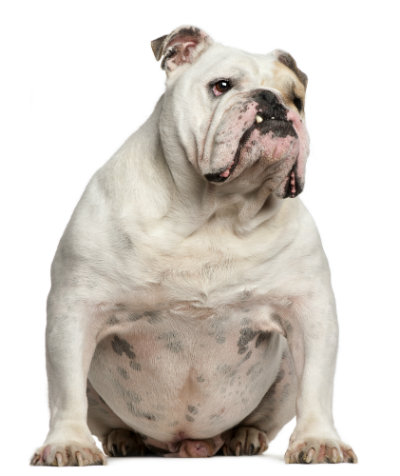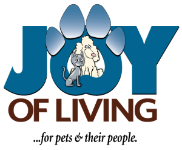Does Your Dog Need To Lose A Few Pounds?
Posted on January 14, 2013 by Joy of Living No comments

Pet obesity is becoming a major problem, with 2012 statistics showing at least 53% of dogs in the U.S. are considered overweight or obese. There are three quick ways to check on whether your dog falls into the overweight category:
- Can you feel his ribs and spine when you touch him?
- When viewed from above, can you see your dog’s inward curve showing a distinct waistline?
- When you view him from the side, can you see an upward tuck in the belly area?
If the answer to any of those questions is no, there’s a good chance your pet is overweight. Before beginning any sort of weight loss program for your dog, though, have him checked out by your veterinarian.
Your vet can provide information like the number of calories your dog should have daily, your dog’s ideal weight, and an activity schedule to help your dog get into better shape. Once the plan is set, here are some tips to help your dog shed unwanted weight:
Determine the number of calories in your dog’s food
Using the vet’s recommended daily calorie allowance, check the food container to see number of calories per serving. Food should account for 90% of dog’s daily allowance. If the food you’re feeding is too high in calories, you may need to change to a different brand. Review the recommended serving based on your pet’s ideal weight, and DON’T feed him more than that recommended amount.
If your dog seems to be hungry after eating his meal, try supplementing his food with low calorie “add-ins”
Some good examples of add-ins include green beans and pumpkin (pumpkin only, do not use the pumpkin pie mix since it has added sugars your dog doesn’t need). There are very low in calories, but offer extra nutrients and fiber that will help your pet feel full longer.
Minimize the number of treats you give your dog
Treats are just that, comparable to dessert for us, so don’t over treat your dog. Treats have calories too, and should make up no more than 10% of your dog’s caloric intake daily. Look for treats with very low calories (some have 1-3 calories per treat), or even better, offer fresh vegetables like carrots or broccoli.
These tips, along with increasing your dog’s daily activity will help him shed those unwanted pounds. Check in with your vet periodically for weight checks, and make adjustments as necessary.

Comments